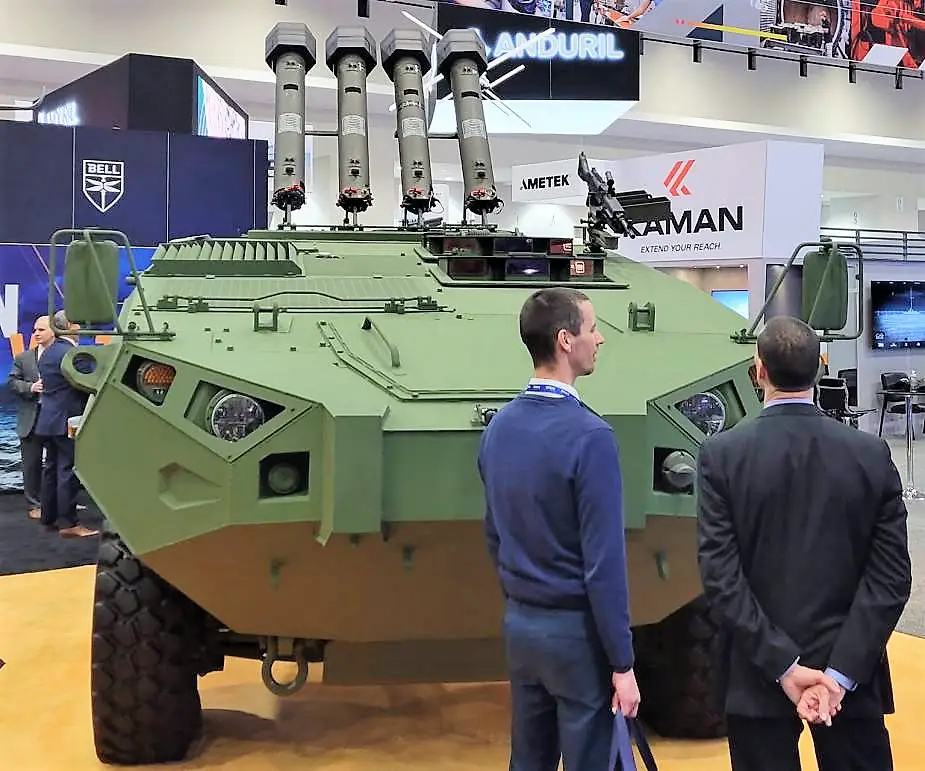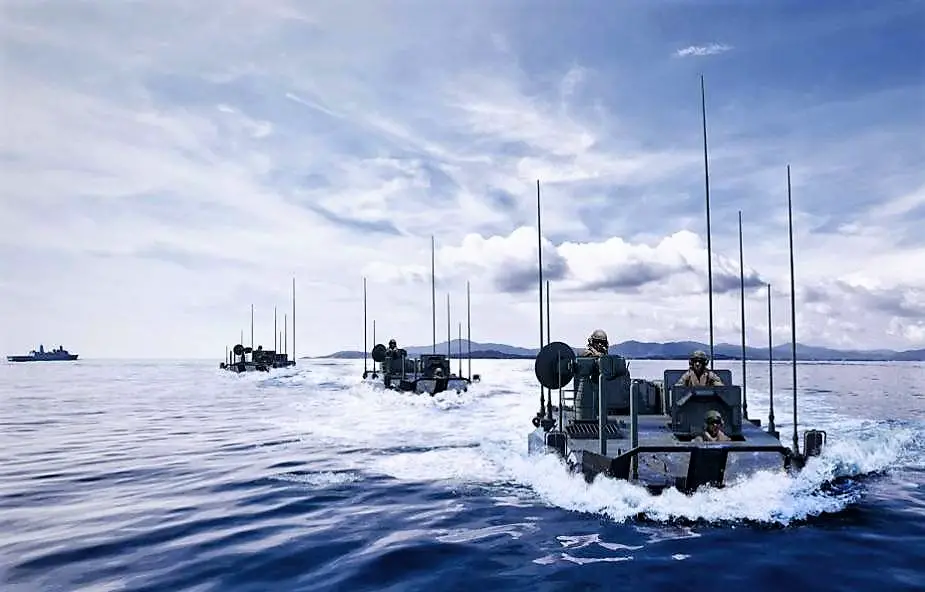Breaking news
Textron Cottonmouth ARV showcased with HERO Loitering Munitions at Modern Day Marine 2022.
According to a tweet from Ronkanen, Textron Systems in partnership with UVision, is showcasing a Cottonmouth ARV armed with HERO loitering munition launchers. Army Recognition already published information about the presence of UVision USA - a manufacturer of aerial loitering munitions – showcasing its Hero-120 OPF-M (Organic Precision Fires-Mounted (OPF-M), along with the family of HERO aerial loitering munition systems, installed on both ACVs and ARVs, at Modern Day Marine 2022.
Follow Army Recognition on Google News at this link

Textron Cottonmouth ARV armed with HERO loitering munition launchers (Picture source: Twitter account of Ronkanen)
A loitering munition (also known as a suicide drone or kamikaze drone) is a weapon system category in which the munition loiters (waits passively) around the target area for some time and attacks only once a target is located. Loitering munitions enable faster reaction times against concealed or hidden targets that emerge for short periods without placing high-value platforms close to the target area, and also allow more selective targeting as the attack can easily be aborted.
Loitering munitions fit in the niche between cruise missiles and unmanned combat aerial vehicles (UCAVs), sharing characteristics with both. They differ from cruise missiles in that they are designed to loiter for a relatively long time around the target area, and from UCAVs, in that a loitering munition is intended to be expended in an attack and has a built-in warhead.
Loitering weapons first emerged in the 1980s for use in the Suppression of Enemy Air Defenses (SEAD) role against surface-to-air missiles (SAMs), and were deployed for the SEAD role in a number of military forces in the 1990s. Starting in the 2000s, loitering weapons have been developed for additional roles ranging from relatively long-range strikes and fire support down to tactical, very short-range battlefield systems that fit in a backpack.
Purpose-built for the U.S. Marine Corps Advanced Reconnaissance Vehicle (ARV) program, the new Cottonmouth ARV is armed with advanced full-spectrum reconnaissance and surveillance sensors. It’s designed to defeat threats beyond the line of sight (BLOS). Amphibious mobility and electronic warfare capabilities define a vehicle that is adaptable.

Textron's Cottonmouth ARV is armed with advanced full-spectrum reconnaissance and surveillance sensors (Picture source: Textron Systems)

Having been designed for the Marine Corps, the Textron Cottonmouth ARV is amphibious (Picture source: Textron Systems)

Textron Cottonmouth ARV is designed to defeat threats beyond the line of sight (BLOS) (Picture source: Textron Systems)


























